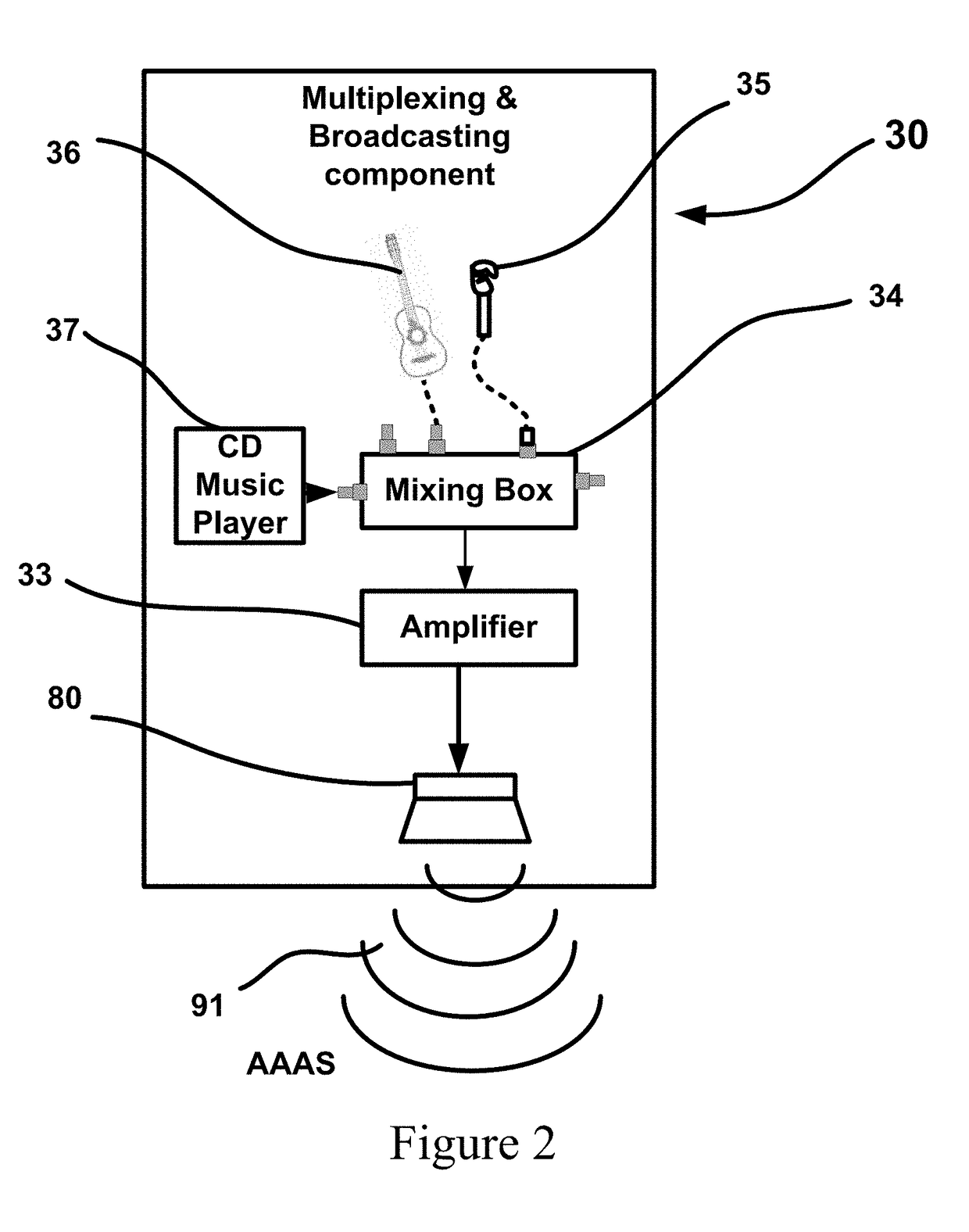System and method for active reduction of a predefined audio acoustic noise by using synchronization signals
a technology of synchronization signal and active reduction, which is applied in the field of active reduction of audio acoustic noise, can solve the problems of high construction requirements, high cost, and disconnection of users from the surroundings, and achieve the effect of maximizing improving the attenuation of undesired audio acoustic nois
- Summary
- Abstract
- Description
- Claims
- Application Information
AI Technical Summary
Benefits of technology
Problems solved by technology
Method used
Image
Examples
Embodiment Construction
[0095]FIG. 5 illustrates schematically the major components of a system and method (10) for active reduction of an audio acoustic noise signal of the present invention and their employment mode relative to each other. The figure illustrates the three major components of system: 1) an audio Multiplexing and Broadcasting component (30); 2) synchronization and transmitting component (40); and 3) a quieting component (50). A detailed explanation of the three major components of the system (10) is given in FIG. 6. The structure and usage of the synchronization signal, referred to as “SYNC signal”, is given further on in the text, as well as analysis of the SYNC employment algorithm.
[0096]The method and system of the present invention is based on generating antiphase signal which is synchronized to the predefined noise, by using dedicated synchronization signals, referred in the present text as “SYNC”. The SYNC signals are electrically generated (38), and then acoustically emitted through...
PUM
 Login to View More
Login to View More Abstract
Description
Claims
Application Information
 Login to View More
Login to View More - R&D
- Intellectual Property
- Life Sciences
- Materials
- Tech Scout
- Unparalleled Data Quality
- Higher Quality Content
- 60% Fewer Hallucinations
Browse by: Latest US Patents, China's latest patents, Technical Efficacy Thesaurus, Application Domain, Technology Topic, Popular Technical Reports.
© 2025 PatSnap. All rights reserved.Legal|Privacy policy|Modern Slavery Act Transparency Statement|Sitemap|About US| Contact US: help@patsnap.com



